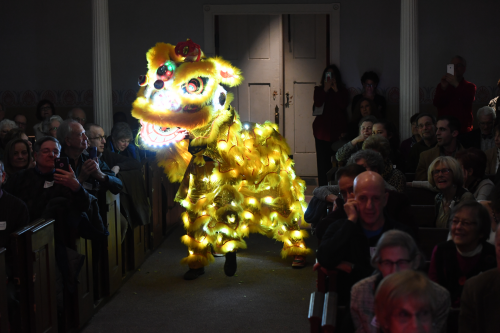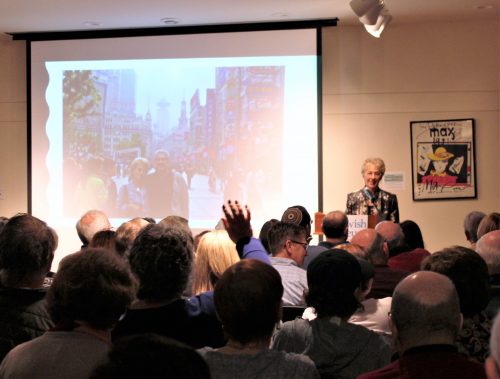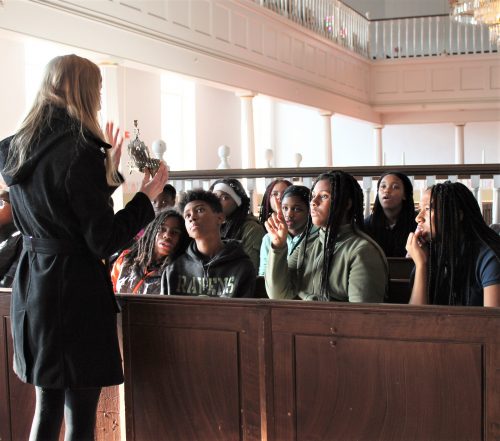We Are Open

Being vulnerable for the difficult conversations
From Visitor Services Coordinator Talia Makowsky. To read more posts from Talia, click here.
Our new mission statement has only been in use a few months, but we’ve been working towards our commitment to connection, action, and a better future for a while now. For me, I’ve been focusing a lot on two particular parts of our values, nurturing discourse and fostering discovery. These values that people matter and learning matters mean that I need to do what I can to make the Museum an open place.
Keeping a Museum open in this way is more than unlocking the doors and turning the lights on. Of course, we check every day that our exhibits are in working order, that our facilities are clean and safe to use, and prepare to greet every person who visits us. But beyond being a friendly face at the front desk, we also work to create a sense of welcome to everyone. At the same time, we want to find moments of vulnerability and honesty to encourage learning. We are still figuring out how to do this, and we make mistakes as we learn, as anyone does. By taking the lessons from these mistakes, and continuing to try our best, we work towards the future of a welcoming Museum that acts as a site of discourse, preservation, and discovery.
Part of this work involves finding stories that are relevant to today, while also sharing the vital stories of the Jewish community. I think the Jewish Refugees in Shanghai exhibit is a great example. This exhibit, which was opened a little over a year ago, was created by the Shanghai Jewish Refugee Museum, about the Jewish refugees who fled Central Europe during the 1930s and 40s. This exhibit, written from the Shanghai perspective, explores the history of the Jewish refugees who fled the Holocaust, what living in Shanghai was like, the formation of the Hongkou Ghetto after the breakout of the Pacific War, and why most of the Jewish refugees left Shanghai after the war. It also includes the personal stories of Jewish people who survived because they were able to take refuge in Shanghai.

While the focus of this exhibit is the time period during the Holocaust, the topics of immigration and the relationship between Jewish and Chinese communities is still obviously relevant to our current times. The conversation around these topics are essential to our mission today, as we share new stories with our audiences, find new ways to have difficult conversations, and engage with new communities, who may be more inclined to visit if their own history is represented as well. This exhibit was clearly a success, as we had jam-packed programs and group visits from organizations who had never stepped through our doors before. For more information about the exhibit, I encourage you to read Marvin’s blog post, Shanghai in Context.

The importance of these types of exhibits and conversations cannot be understated, as one line of the exhibit expresses: “The history of Jewish Refugees in Shanghai is more than a topic for academic research. It also bears real significance on enhancing Sino-Jewish friendship and promoting world peace.” I argue that many of the stories that the Museum shares have an impact on the Jewish community’s relationships, within itself and with others.
Having difficult conversations about weighty topics is important to our goal of being welcoming. By providing a place where discourse can happen, we create more empathy and civility between people. Take our school groups for example. Some of the students that visit the Museum have never stepped into a synagogue before and may not even know what the word means. Our educators lead the students through the history of the Lloyd Street Synagogue, and give them an introduction to Judaism, a somewhat daunting task considering the multi-faceted and complex nature of Judaism. But our educator’s experienced and careful guidance allows students to find connections between themselves and Jewish people, creating empathy and familiarity that wasn’t there before. I see that newfound compassion every time a school group heads back out the door, as they wave goodbye and exclaim “Shalom!” with huge smiles.

As I look forward to future programs, exhibits, and visits at the Museum, I continue to wonder how I can make these moments of discomfort, vulnerability, and learning more accessible to every person who comes through the doors. How can I make help people to feel ready to engage in this discourse, explore new history, and challenge their own personal beliefs? I also wonder how I can push myself to do the same. From what I’ve learned so far, there’s no one answer, as every person finds their own way to learn and to grow, and so different resources and tools must be available for each individual need. While I work to implement those tools, I hope I can represent the Museum as a place of openness and welcoming, no matter what else is going on in the world.
